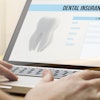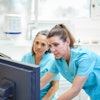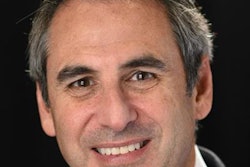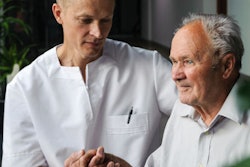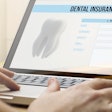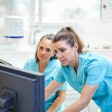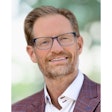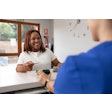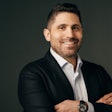
WASHINGTON, DC - The world is changing in fundamental ways, and it is important for dentists to put aside old notions about previous, costly telehealth efforts, according to Paul Glassman, DDS, MBA. In a presentation on the opening day of the ADA 2015 annual meeting, he discussed using telehealth to reach underserved populations.
 Paul Glassman, DDS, MBA.
Paul Glassman, DDS, MBA."We think telehealth will have a major role in the way oral healthcare is delivered in the future," he said.
Telehealth is not any one item or service, Dr. Glassman said, but a "collection of means" that encompasses "a broad variety of technologies and tactics to deliver virtual medical, health, and education services." Dr. Glassman is the director of the Pacific Center for Special Care at the University of the Pacific Arthur A. Dugoni School of Dentistry.
In practice, it means real-time video consultation between patient and dentist. Eventually, tools such as constant pH testing and other exciting developments will integrate smartphone and mobile technology with oral health, he said.
In 2015, for the first time, the ADA is considering a proposed policy statement on telehealth during its 2015 annual meeting. The proposal reads, in part, that teledentistry (telehealth) can include, but is not limited to, the following modalities:
- Live video (synchronous)
- Store and forward (asynchronous)
- Remote patient monitoring (RPM)
- Mobile health (mHealth)
The need for teledentistry services, however, has never been higher, Dr. Glassman noted. He pointed out that, after prescription drugs, oral healthcare was the largest out-of-pocket health expense for consumers, according to a 2008 study.
He also cited an October 2014 ADA Health Policy Resources Center research brief that showed that dental care consistently has the highest percentage of the population that puts off care because of cost. Another ADA brief reported that only about 36% of children from families living less than 100% below the federal poverty level saw a dentist in 2012.
"The majority of underserved people with the majority of dental disease do not take advantage of the traditional dental care delivery system," he said.
Improving access to care
The effectiveness of onsite care in removing transportation barriers and improving access to care is supported by scientific evidence, said Michael Helgeson, DDS, in the same presentation.
Dr. Helgeson is the CEO of Minnesota's nonprofit organization Apple Tree Dental, whose mission is to "improve the oral health of all people, including those with special access needs who face barriers to care." Apple Tree's formation was inspired by the Mayo Clinic, he said. Now in its 30th year, Apple Tree has more than 200 staff members. The program has expanded to Louisiana, California, and North Carolina after starting in Minnesota.
The program's expertise includes the following:
- Geriatric, pediatric, public health, and special care
- IV sedation, oral medicine, and hospital dentistry
- Prosthodontics, oral surgery, and implantology
- Dental education and clinical student rotations
- Fundraising and nonprofit development
- Public policy leadership and advocacy
“Teledentistry ... has the potential to deliver improved health outcomes and positive health professional-patient experiences.”
In 2014, Apple Tree delivered more than $22 million in dental care to its populations. What Dr. Helgeson emphasized, however, was the innovation.
Apple Tree has launched dental care delivery pilot projects, clinical dental education innovations, policy and advocacy programs, health services research projects, and program development since it was founded. The organization has been involved in teledentistry since the early 2000s with its innovative "community collaborative practice," which Dr. Helgeson defined as "collaborating to deliver oral health services where people live, go to school, or receive other health and social services."
Apple Tree uses a mobile dental office and an oral health team. The oral health team, led by a collaborative practice hygienist, travels in a car or van, for example. The organization uses cloud-based electronic health records to facilitate care and communication.
The effectiveness of onsite care in removing transportation barriers and improving access to care is supported by scientific evidence, Dr. Helgeson said.
"Teledentistry, if successfully implemented in different oral health settings, has the potential to deliver improved health outcomes and positive health professional-patient experiences," he concluded.
